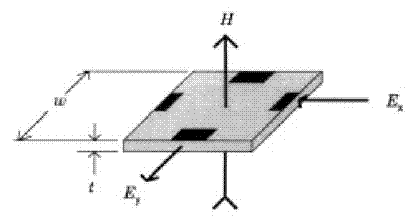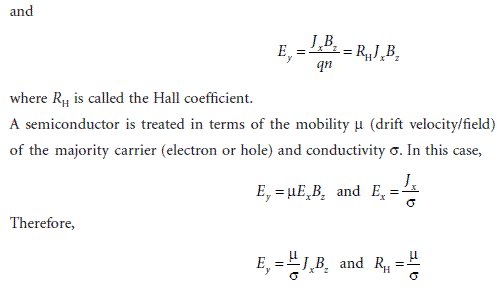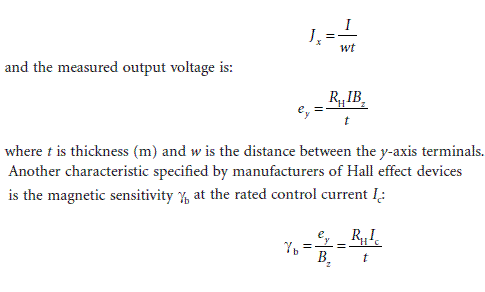- This topic has 1 reply, 1 voice, and was last updated 2 years, 11 months ago by
حمید.
-
CreatorTopic
-
2021-08-03 at 11:08 am #766
غازی
اصول اندازه گیری جریان dc با آمپر متر کلمپی چیست؟
اصول اندازه گیری جریان dc با آمپر متر کلمپی چیست؟ -
CreatorTopic
-
AuthorReplies
-
2021-08-03 at 11:08 am #2601
حمید
سنجش جریان مستقیم توسط آمپر مترهای کلمپی توسط سنسورهای هال انجام می شود. این آمپرمترها در دو نوع AC و DC ساخته می شوند. اگر جریانی از یک بلور رسانا در جهت عمود بر میدان مغناطیسی یکنواخت (H) اعمال?شده عبور کند، رسانا دارای اختلاف پتانسیل (?V) میان رخ?های عمود بر جهت جریان و میدان مغناطیسی خواهد شد. این پدیده را به افتخار کاشف آن ادوین هال اثر هال می?گویند.اثر هال نتیجهٔ طبیعت جریان عبوری از هادی است. جریان از حرکت تعداد زیادی حامل?های بار تشکیل می?شود که معمولاً الکترون?ها، حفره?ها یا ترکیبی از این دو هستند. حامل?های بار هنگام حرکت در میدانی که بر مسیر حرکت آنها عمود است، نیرویی را تجربه می?کنند، که نیروی لورنتز نامیده می?شود. وقتی چنین میدان مغناطیسی?ای حاضر نباشد، بارها تقریبا به صورت مستقیم حرکت می?نمایند. اما وقتی یک میدان مغناطیسی عمود اعمال شود، مسیر آنها منحرف می?شود و روی یکی سطوح ماده تجمع می?کنند. نتیجهٔ این امر به جای ماندن بارهای مساوی اما با علامت مخالف در سطح دیگر خواهد بود، یعنی همان?جایی که کمبود حامل بار وجود دارد. و بدین ترتیب یک توزیع نامتقارن از چگالی بار در سطح عنصر هال به وجود می?آید که جهت آن عمود بر میدان مغناطیسی و جهت حرکت حامل?های بار است. جدا شدن بارها یک میدان الکتریکی ایجاد می?کند که با ادامهٔ مهاجرت بارها مخالفت خواهد کرد. بنابراین یک اختلاف پتانسیل ثابت تا زمانی که جریان ادامه داشته باشد به وجود خواهد آمد.
 برای یک فلز ساده که تنها یک نوع حامل بار (الکترون?ها) در آن وجود دارد، ولتاژ هال (VH)، به صورت زیر بدست می?آید:
برای یک فلز ساده که تنها یک نوع حامل بار (الکترون?ها) در آن وجود دارد، ولتاژ هال (VH)، به صورت زیر بدست می?آید: VH=-IB/(dne) که در آن I جریان عبوری از طول صفحه، B چگالی شار مغناطیسی، d عمق صفحه، e بار الکتریکی الکترون و n چگالی حامل?های بار الکتریکی است. اثر هال به صورت زیر تعریف می?شود:RH= Ey/JxB که در آن j چگالی جریان الکترون?های حامل است. در سیستم اِس?آی این فرمول به صورت زیر ساده می?شود: بنابراین اثر هال به عنوان ابزاری که می?توان به وسیلهٔ آن یا چگالی حامل و یا میدان مغناطیسی را اندازه گرفت، بسیار سودمند است.
بنابراین اثر هال به عنوان ابزاری که می?توان به وسیلهٔ آن یا چگالی حامل و یا میدان مغناطیسی را اندازه گرفت، بسیار سودمند است. The Hall effect device, which is probably the most familiar and widely used sensor for measuring strong magnetic fields, is based on the discovery of the Hall effect by Edwin H. Hall in 1897. The Hall effect is a consequence of the Lorentz force law, which states that a moving charge q, when acted upon by a magnetic induction field B, will experience a force F that is at right angles to the field vector and the velocity vector v of the charge as expressed by the following equation: F = -q (E + v x B) The Hall effect device consists of a flat, thin rectangular conductor or semiconductor with two pairs of electrodes at right angles to one another as illustrated in Figure below.  An electric field Ex is applied along the x or control axis. When a magnetic field Bz is applied perpendicular to the surface of the device, the free charge, which is flowing along the x-axis as a result of Ex, will be deflected toward the y or Hall voltage axis. Since current cannot flow in the y-axis under open-loop conditions, this will cause a buildup of charge along the y-axis that will create an electric field which produces a force opposing the motion of the charge: Ey = vx Bz where vx is the average drift velocity of the electrons (or majority carriers). In a conductor that contains n free charges per unit volume having an average drift velocity of vx, the current density is: Jx = qn vx
An electric field Ex is applied along the x or control axis. When a magnetic field Bz is applied perpendicular to the surface of the device, the free charge, which is flowing along the x-axis as a result of Ex, will be deflected toward the y or Hall voltage axis. Since current cannot flow in the y-axis under open-loop conditions, this will cause a buildup of charge along the y-axis that will create an electric field which produces a force opposing the motion of the charge: Ey = vx Bz where vx is the average drift velocity of the electrons (or majority carriers). In a conductor that contains n free charges per unit volume having an average drift velocity of vx, the current density is: Jx = qn vx  The value of RH varies substantially from one material to another and is both temperature and field magnitude dependent. Its characteristics can be controlled to a certain extent by doping the base material with some impurities. For example, doping germanium with arsenic can reduce the temperature dependence at the expense of magnitude. The voltage measured across the y-axis terminals is the integral of the electric field along the y-axis. If a constant control current I is flowing along the x axis, then:
The value of RH varies substantially from one material to another and is both temperature and field magnitude dependent. Its characteristics can be controlled to a certain extent by doping the base material with some impurities. For example, doping germanium with arsenic can reduce the temperature dependence at the expense of magnitude. The voltage measured across the y-axis terminals is the integral of the electric field along the y-axis. If a constant control current I is flowing along the x axis, then:  Although conductors such as copper (Cu) can be used to make a Hall effect device, semiconductor materials, such as gallium arsenide (GaAs), indium antimonide (InSb), and indium arsenide (InAs), produce the highest and most stable Hall coefficients. InAs, because of its combined low temperature coefficient of sensitivity (<0.1%/
Although conductors such as copper (Cu) can be used to make a Hall effect device, semiconductor materials, such as gallium arsenide (GaAs), indium antimonide (InSb), and indium arsenide (InAs), produce the highest and most stable Hall coefficients. InAs, because of its combined low temperature coefficient of sensitivity (<0.1%/ -
AuthorReplies
- You must be logged in to reply to this topic.
